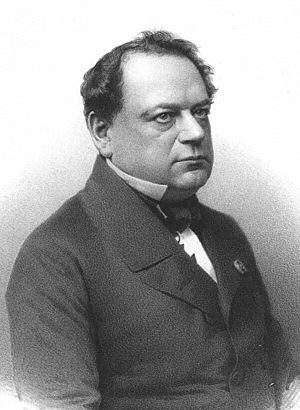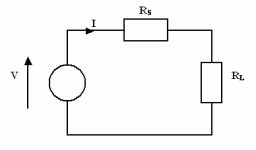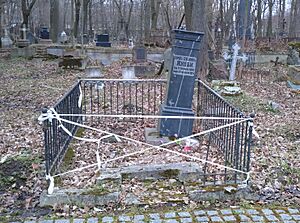Moritz von Jacobi facts for kids
Quick facts for kids
Moritz Hermann von Jacobi
|
|
|---|---|

Moritz Hermann von Jacobi
|
|
| Born | 21 September 1801 |
| Died | 10 March 1874 (aged 72) |
| Nationality | German |
| Known for | Electric boat Electric motor Electrotyping Jacobi's law Jacobi mine |
| Awards | Demidov Prize (1840) |
| Scientific career | |
| Fields | Physics, Engineering |
| Institutions | Russian Academy of Sciences |
Moritz Hermann von Jacobi was a smart engineer and physicist. He was born in Potsdam, Prussia, in 1801. Later, he moved to the Russian Empire and did most of his important work there.
Jacobi helped make big steps forward in things like electric motors, a special way of printing called electrotyping, and telegraphy. He is also known for a rule in physics called Jacobi's law and for inventing a type of naval mine.
Contents
Electric Motors and Boats
Moritz Jacobi started studying electric motors in 1834. In 1835, he moved to Dorpat (which is now Tartu, Estonia) to teach at Dorpat University.
He moved to Saint Petersburg in 1837. There, he researched how to use electromagnetic forces to make machines move. He studied how powerful an electromagnet could be in motors and generators.
Jacobi also figured out how to get the most power from a battery to an electric motor. This led to his famous "maximum power theorem." He even tested motors by seeing how much zinc the battery used up.
With money from Tsar Nicholas I, Jacobi built an amazing electric boat in 1839. This boat was 28 feet long and powered by batteries. It carried 14 people on the Neva River in Saint Petersburg, moving against the current at three miles per hour!
Jacobi's Law of Power
Jacobi's law is also known as the maximum power theorem. It helps engineers understand how to get the most power from an electrical source.
The law says: "You get the most power when the internal resistance of the power source is the same as the resistance of the device (or 'load') you are powering."
Imagine you have a battery (the source) and you want to power an electric motor (the load). To make the motor work as strongly as possible, the resistance inside the battery should match the resistance of the motor. This rule is very useful when designing things like electric motors that run on batteries.
Electrotyping and Telegraphs
In 1838, Jacobi made another important discovery called electrotyping, or galvanoplastics. This was a new way to make printing plates. It uses electroplating, which is like a battery working in reverse.
This method allowed people to make copies of printing plates. These copies, called stereotypes, could then be used for printing instead of the original metal type. This technique is still used in some types of printing today.
Jacobi also worked on making the electric telegraph better. From 1842 to 1845, he built a telegraph line between Saint Petersburg and Tsarskoe Selo. He used an underground cable for this line.
In 1867, he represented Russia at a big meeting in Paris about measurement units. He strongly believed that the metric system should be used everywhere.
In 1853, Jacobi invented a new type of naval mine. This mine was tied to the bottom of the sea with an anchor. A cable connected it to a special battery on the shore, which powered it.
The mine had a powerful explosive charge, equal to about 14 kilograms (31 pounds) of black powder. The Russian military approved his invention. In 1854, 60 of Jacobi's mines were placed near the forts of Pavel and Alexander in Kronstadt to protect the area.
Family Life
Moritz von Jacobi had a famous brother named Carl Gustav Jacob Jacobi. Carl was a very important mathematician.
See also
In Spanish: Moritz von Jacobi para niños



